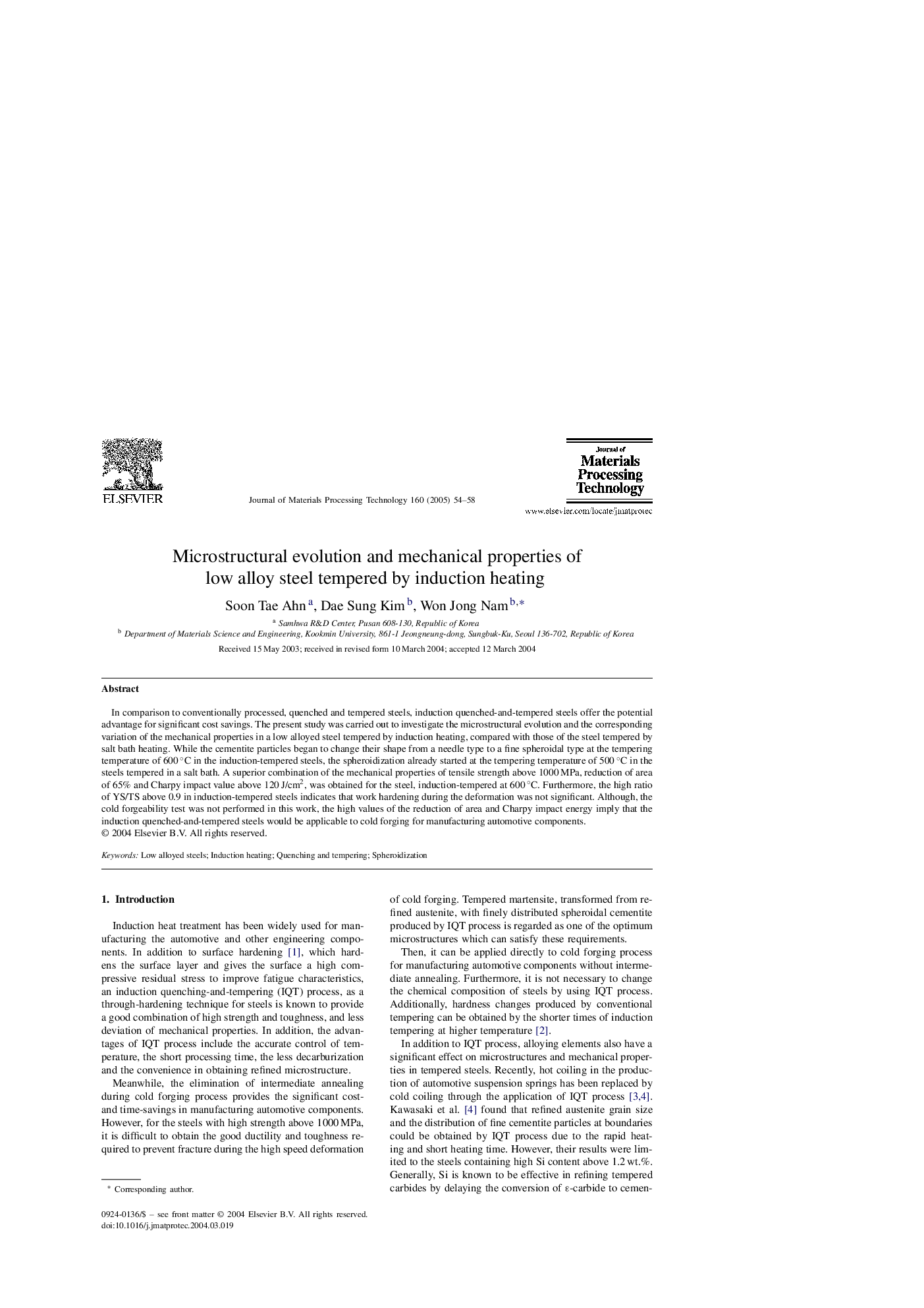| Article ID | Journal | Published Year | Pages | File Type |
|---|---|---|---|---|
| 10416886 | Journal of Materials Processing Technology | 2005 | 5 Pages |
Abstract
In comparison to conventionally processed, quenched and tempered steels, induction quenched-and-tempered steels offer the potential advantage for significant cost savings. The present study was carried out to investigate the microstructural evolution and the corresponding variation of the mechanical properties in a low alloyed steel tempered by induction heating, compared with those of the steel tempered by salt bath heating. While the cementite particles began to change their shape from a needle type to a fine spheroidal type at the tempering temperature of 600 °C in the induction-tempered steels, the spheroidization already started at the tempering temperature of 500 °C in the steels tempered in a salt bath. A superior combination of the mechanical properties of tensile strength above 1000 MPa, reduction of area of 65% and Charpy impact value above 120 J/cm2, was obtained for the steel, induction-tempered at 600 °C. Furthermore, the high ratio of YS/TS above 0.9 in induction-tempered steels indicates that work hardening during the deformation was not significant. Although, the cold forgeability test was not performed in this work, the high values of the reduction of area and Charpy impact energy imply that the induction quenched-and-tempered steels would be applicable to cold forging for manufacturing automotive components.
Related Topics
Physical Sciences and Engineering
Engineering
Industrial and Manufacturing Engineering
Authors
Soon Tae Ahn, Dae Sung Kim, Won Jong Nam,
